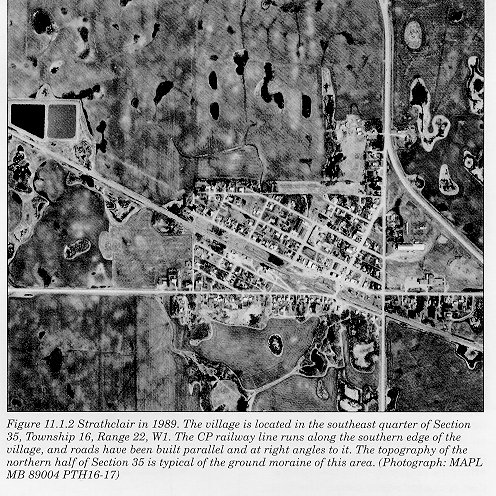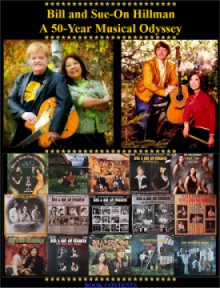Manitoba
Not Really a Prairie Province, New Book Reveals
Reprinted from the Brandon University Alumni News,
June 1996
A definitive new book on the geography of Manitoba edited
by BU Professors
John Welsted and John Everitt (and former
BU prof Christoph Stadel, who now resides in Austria) was released
recently. "The
Geography of Manitoba, its Land and its People" is the first comprehensive
update of Manitoba Geography in more than 25 years and is current to within
3 months of its release date.
According to Dr. John Welsted (Geography) the book,
which took about 6 years to assemble, is aimed at 2nd year university students,
or anyone with an interest in geography. "We provide a good level of detail
without trying to be too ultra-technical," Welsted said. "You can pick
it up at any point and find something interesting. We're hoping it sets
the standard for (future) geography texts.
Along with setting standards, the book reveals some interesting
facts about the province, like the fact that Manitobans use the term "prairie
province" loosely when describing their surroundings. Manitoba is primarily
located on the rocky Canadian Shield, and part of it is subarctic tundra;
"prairie" areas make up a small portion of the province.
Contributors (47 in total) ranged from experts in botany,
history, political science, geology and geography, as well as community
planners, a museum curator and church minister. A number of them are BU
or Brandon College grads, including Allison Williams, Dr. Tom Carter
'67, David McDowell '65, Bill Hillman
'71/'89/'91, Rev. Paul Curtis '70, and Brian McGregor '86.
Academic participants included representatives from Brandon
University, the Universities of Manitoba, Winnipeg and Saskatchewan, Simon
Fraser University and the University of Salzburg in Austria.
There are more than 200 maps, figures, black and white
photos plus a colour section. The book is 352 pages long and will sell
for $54.95.
It is available at the BU bookstore (204) 727-9732. A
Geography of Manitoba - Its Land and its People is published by
the University of Manitoba Press and distributed by the University of Toronto
Press. -BC
Book
is a Must for any Manitoba School
Fred McGuinness Column -- Brandon Sun -- December
1996
1996: What with all this talk of books in the air, I must
confess to a scandalous oversight. A few weeks ago, I mentioned how much
I had enjoyed Brandon: Historical Perspectives on the Wheat City, which
was assembled and produced by the Department of Geography at Brandon University.
About that oversight. Earlier this year I neglected to
tell you of a companion publication assembled by the same department. It
is Geography Manitoba: Its Land and its People.
This is a collection. Three professors: John Welsted,
John Everitt and Christoph Stadel worked on the blueprint of a publication
that would examine a province and its residents from every important aspect.
Having done this, they requested the assistance of 37 persons whom they
list as contributors.
Once a contributor had agreed to participate, he or she
was assigned a topic and a schedule.
This is an important publication, important to the point
that a copy should be in the library of every school.
There are major sections: The physical background; People
and settlements; Resources and industry; Recreation. Inside each of those
there are scores of sub-sections.
Inside the latter you will find brief items which illustrate
the writer’s principal points. As an example, after Emdad Haque wrote his
chapter, Population of Manitoba: Patterns and Trends, complete with 45
footnotes, there are several case histories. Geoffrey Smith wrote on the
Graying of Manitoba; Laurence Nixon wrote on the Changing Religious Trends
in Manitoba; and James Darlington wrote on the Cemeteries of Southern Manitoba.
While, in essence, this is an academic book, in its chapters
you can find nuggets of information available nowhere else, in my opinion.
For example, when Sam Corrigan and Robert Annis wrote
Aboriginal Settlement in Manitoba, they included the story of Ste. Madeleine,
Manitoba, a tiny village near St. Lazare. Correction, it once was near
St. Lazare and it is no more. PFRA one day put the bulldozers to homes
and church and turned the district into a community pasture.
Let me indulge in a personal note here. I say this book
is so good because the professors made their system work; they hewed precisely
to the blueprint and its companion schedule. I know this because I was
involved in a most modest manner, as befits a fellow who has a lot about
which to be modest.
Would I participate? I was asked this question on the
telephone by Dr. Everitt. I said I would be delighted. He said my assignment
was an article on the Agricultural Hall of Fame, which, you should know
is currently (and temporarily) located on the walls of the dining room
at the Ag. Centre. The Hall is a collection of brass plaques honoring outstanding
individuals from the basic industry. Thanks to the courtesy of Glen Olmstead,
Hall of Fame majordomo, I spent hours in the files of the members. This
gave me an introduction to some of the former greats, like Almon James
cotton of Swan River, J.D. McGregor, Dr. Frank Leith Skinner and Henry
Louis Patmore, as well as to a number I know, or have known. I think here
of Grant MacEwan, Alf and Edith Poole, Dr. Harvey Tolton, among others.
That’s enough digression.
What is important about Geography Manitoba: Its Land
and its People, is the extraordinary amount of information that is
now available between a single set of covers. While it is exhaustive, it
is also readable.
Those of you who are feeling generous this Christmas should
think of donating a copy of this book to your school, or your public library.
It deserves a wide and continuing audience.
Fred McGuinness is a Brandon-based
freelance writer.
"One of a kind ... a comprehensive,
attractive and valuable reference book for anyone interested in Manitoba,
and everyone who lives there."–Prairie Books Now
Book Description
Manitoba is more than one of Canada's three prairie provinces.
Encompassing 649,950 square kilometres, its territory ranges from Canadian
Shield to grassland, parkland, and subarctic tundra. Its physical geography
has been shaped by ice-age glaciers, while its human geography reflects
the influences of its various inhabitants, from the First Nations who began
arriving over 9,000 years ago, to its most recent immigrants. This fascinating
range of geographical elements has given Manitoba a distinct identity and
makes it a unique area for study.
Geography of Manitoba is the first comprehensive
guide to all aspects of the human and physical geography of this unique
province. Representing the work of 47 scholars, and illustrated with over
200 maps, diagrams, and photographs, it is divided into four main sections,
covering the major areas of the province's geography: Physical Background;
People and Settlements; Resources and Industry; and Recreation.
As well as studying historical developments, the contributors
to Geography of Manitoba analyse recent political and economic events
in the province, including the effect of federal and provincial elections
and international trade agreements. They also comment on future prospects
for the province, considering areas as diverse as resource management and
climatic trends.
![]()
![]()



![]()
![]()



